Enquire
Follow the below, which will enable us to put you in contact with an EV expert to discuss your specific requirements
Follow the below, which will enable us to put you in contact with an EV expert to discuss your specific requirements
Our EV experts will work with our network of partners to produce a complete and competitive solution for your EV Business needs
Once agreeing your proposal, we will arrange for all site works and meter installation to be completed at a time that best suits your business
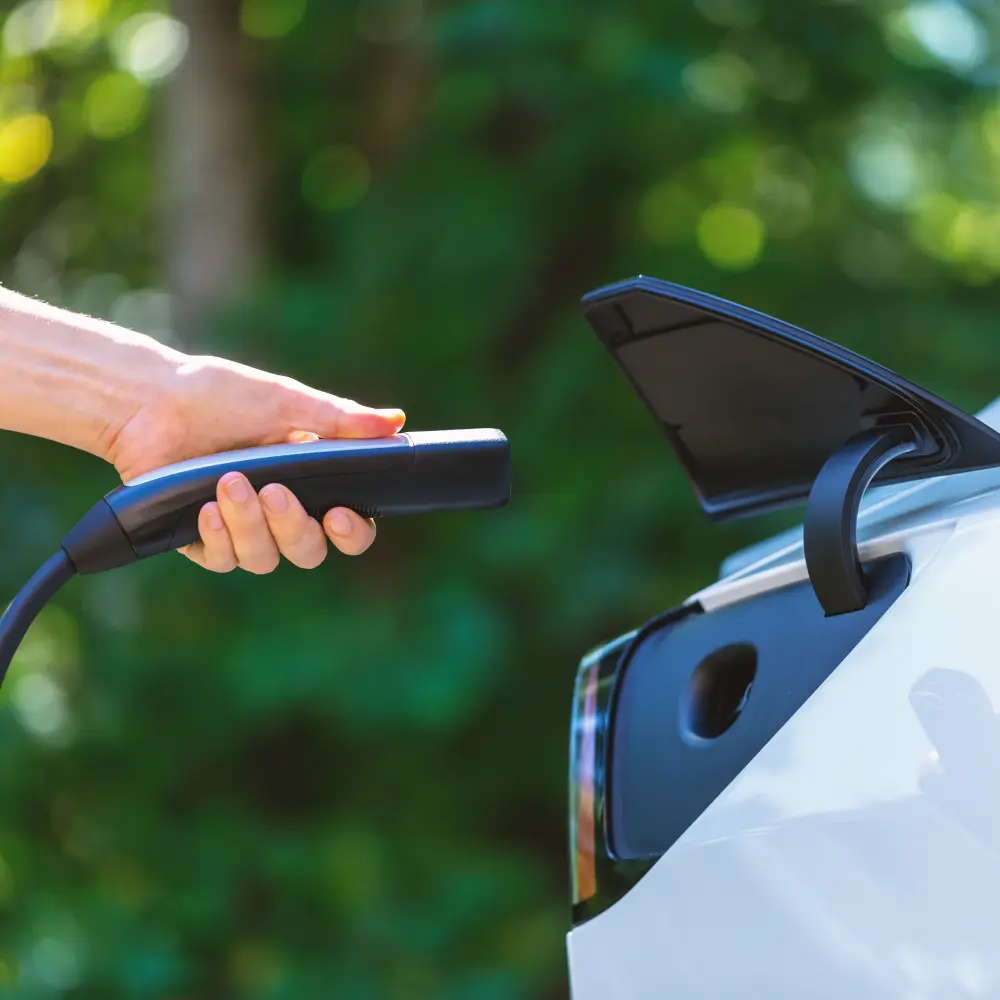


The WALLPOD:EV is a low-cost, entry level charging unit, designed to offer full Mode 3 fast charging to every Electric Vehicle (EV/PHEV) on the market today. This charging unit has been specifically designed for domestic and commercial locations including offices, factories, restaurants, hotels, sports venues, etc.
View Products
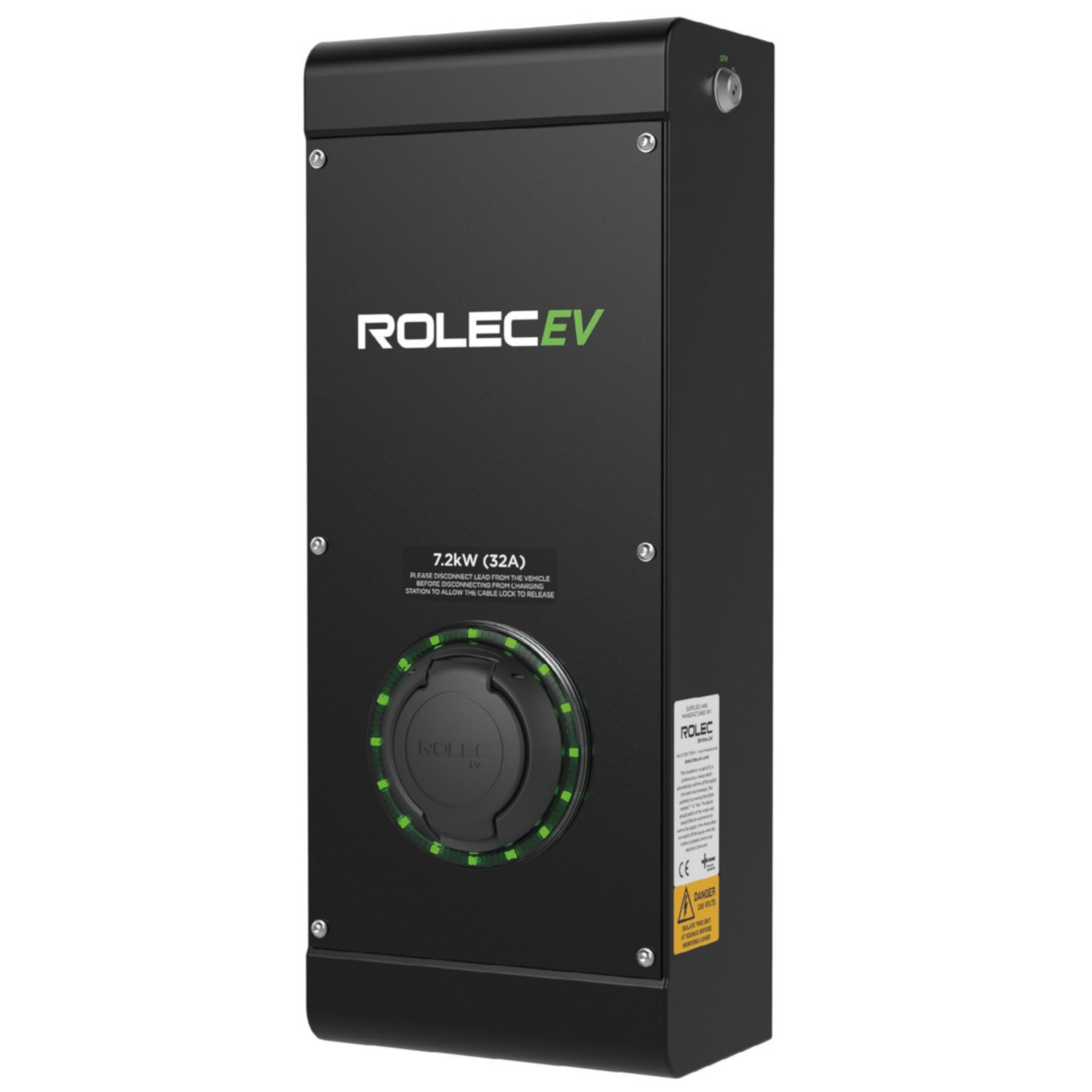

The SECURICHARGE:EV OPENCHARGE wall-mounted charging point is a heavy-duty and vandal-resistant unit, providing the perfect solution for exposed locations. This durable OCPP compliant charging unit can offer a simple pay-to-charge solution via the EV driver’s smartphone and/or RFID card/fob authorisation through any chosen OCPP back office management system. Available in both 1way or 2way versions, providing Mode 3 fast charging in 3.6kW or 7.2kW speeds, this unit features a built in GPRS antenna and Ethernet connection.
View Products
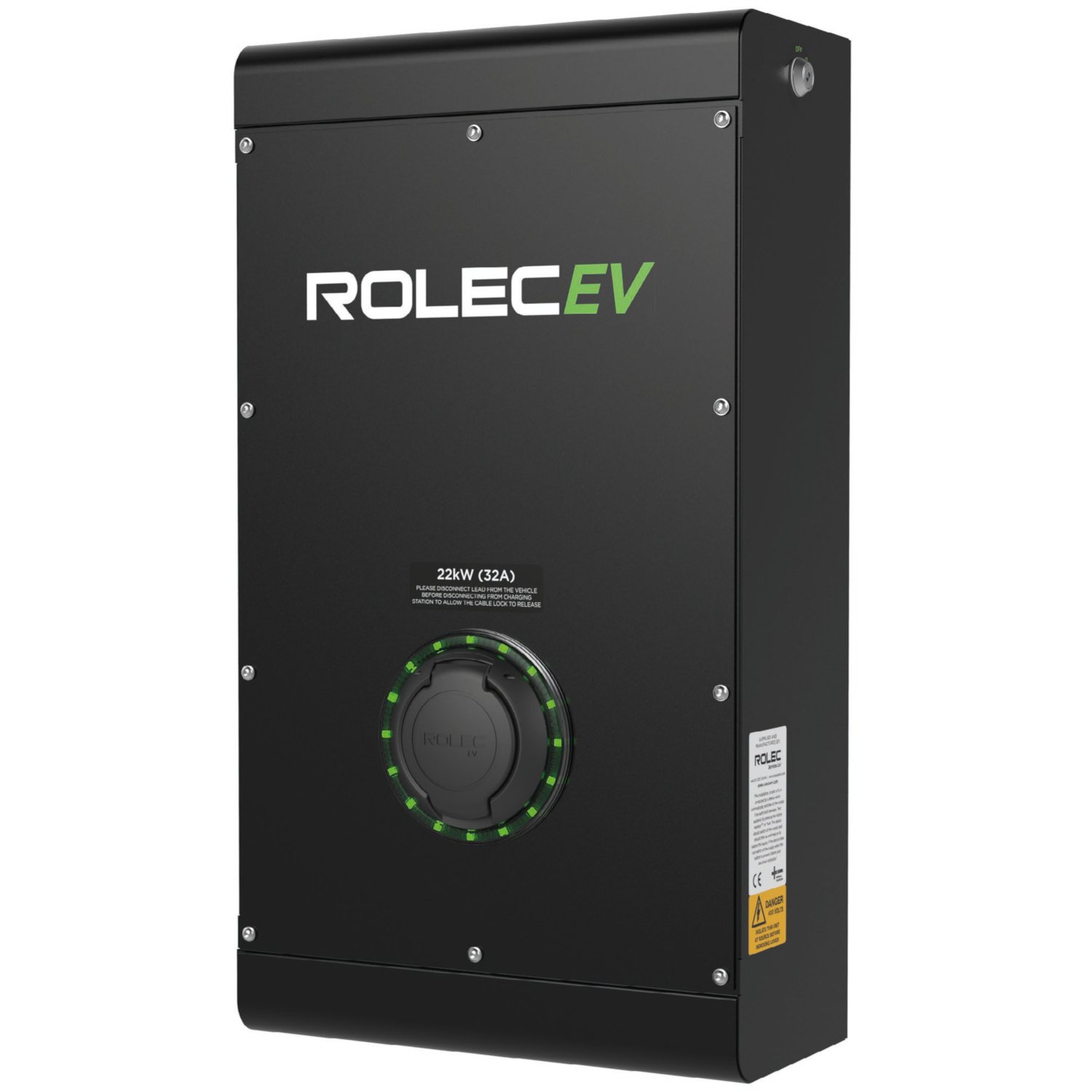

The SECURICHARGE:EV OPENCHARGE wall-mounted charging point is a heavy-duty and vandal-resistant unit, providing the perfect solution for exposed locations. This durable OCPP compliant charging unit can offer a simple pay-to-charge solution via the EV driver’s smartphone and/or RFID card/fob authorisation through any chosen OCPP back office management system. Available in both 1way or 2way versions, providing Mode 3 Superfast charging in 11kW or 22kW speeds, this unit features a built in GPRS antenna and Ethernet connection.
View Products


The BASICCHARGE:EV OPENCHARGE pedestal replicates Rolec’s world-leading Classic utility pedestal, which provides a simple and effortless EV charging experience for all users. This affordable OCPP compliant pedestal can offer a simple pay-to-charge solution via the EV driver’s smartphone and/or RFID card/fob authorisation through any chosen OCPP back office management system. Available in either 1way or 2way versions, providing Mode 3 fast charging in 3.6kW or 7.2kW speeds, this unit features a built in GPRS antenna and Ethernet connection.
View Products
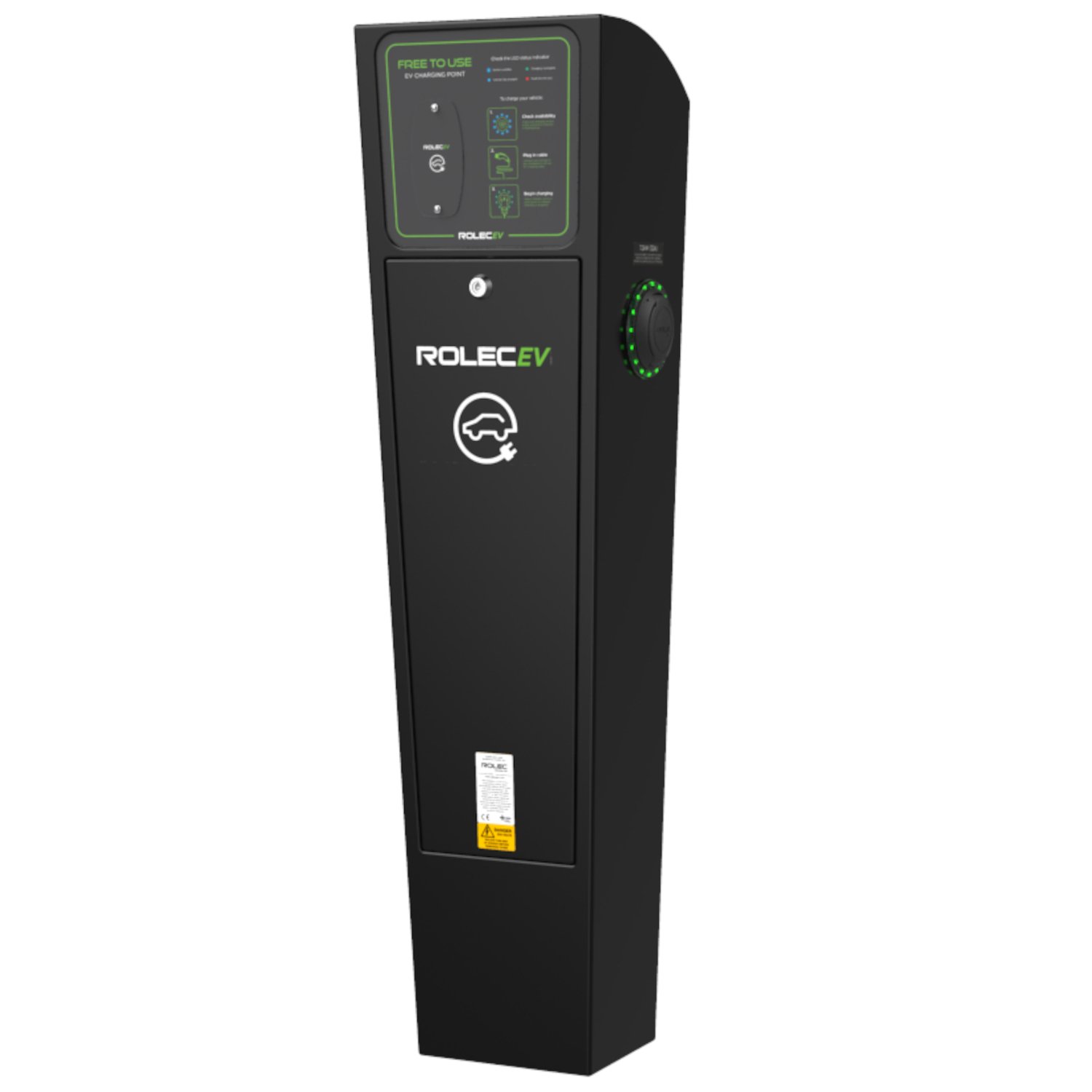

The AUTOCHARGE:EV OPENCHARGE is a heavy duty, hard wearing EV charging pedestal, specifically designed and manufactured for commercial and public facing environments. This versatile OCPP compliant pedestal can offer a simple pay-tocharge solution via the EV driver’s smartphone and/or RFID card/ fob authorisation through any chosen OCPP back office management system. Available in both 1way or 2way versions, providing Mode 3 fast charging in 3.6kW or 7.2kW speeds, this unit features a built in GPRS antenna and Ethernet connection.
View Products


The AUTOCHARGE:EV OPENCHARGE ?is a heavy duty, hard wearing EV charging pedestal, specifically designed and manufactured for commercial and public facing environments. This versatile OCPP compliant pedestal can offer a simple pay-tocharge solution via the EV driver’s smartphone and/or RFID card/ fob authorisation through any chosen OCPP back office management system. Available in either 1way or 2way versions, providing Mode 3 Superfast charging in 11kW or 22kW speeds, this unit features a built in GPRS antenna and Ethernet connection.
View Products


The QUANTUM:EV OPENCHARGE pedestal is a sophisticated and resilient EV charging point, providing a combination of durability and impeccable design for all locations. This ultra-modern OCPP compliant pedestal can offer a simple pay-to-charge solution via the EV driver’s smartphone and/or RFID card/fob authorisation through any chosen OCPP back office management system. Available in both 1way or 2way versions, providing Mode 3 fast charging in 3.6kW or 7.2kW speeds, this unit features a built in GPRS antenna and Ethernet connection.
View Products


The QUANTUM:EV OPENCHARGE ?pedestal is a sophisticated and resilient EV charging point, providing a combination of durability and impeccable design for all locations. This ultra-modern OCPP compliant pedestal can offer a simple pay-to-charge solution via the EV driver’s smartphone and/or RFID card/fob authorisation through any chosen OCPP back office management system. Available in either 1way or 2way versions, providing Mode 3 superfast charging in 11kW or 22kW speeds, this unit features a built in GPRS antenna and Ethernet connection.
View Products


AC charging station for commercial use. Ideally suited for charging fleets, employee vehicles or for publicly accessible charging for customers requiring various options for billing and invoicing and sophisticated operational capabilities.
View Products


AC charging station for commercial use. Ideally suited for charging fleets, employee vehicles or for publicly accessible charging for customers requiring various options for billing and invoicing and sophisticated operational capabilities.
View Products
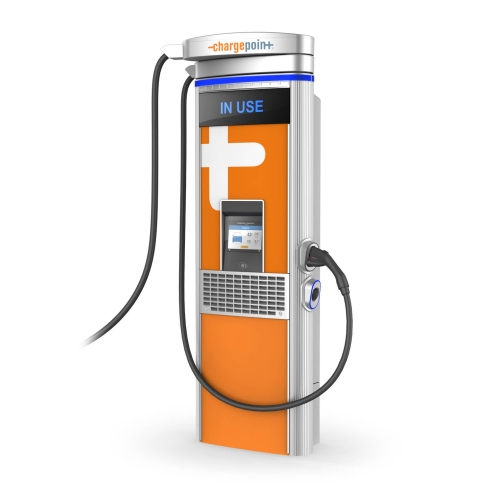

125kW DC Charging Station, modular and scalable for ultra-rapid public DC charging. Includes two cables, for charging a single vehicle per station. Stations can be paired to allow charging of 2 vehicles simultaneously, offering power from the four internal power modules (2x 62.5kW modules per station) that can be configured to deliver 2/2 or 3/1 from the paired stations - configured through the DC Enterprise Cloud Plan.
View Products
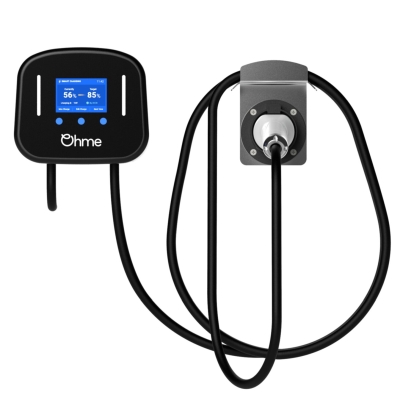

7kW stand or wall mounted EV charger, perfect for overnight depot charging • Approved for WCS scheme grant • Smart charging to manage shape of workplace charging to avoid peak prices and residual costs, and optimise energy flex procurement • 3G / 4G connectivity for easy set up, with ability to direct to chosen telecom provider as ‘first choice’ • OCPP compliant
View Products


7kW portable, intelligent charging point • Can plug into 3-pin socket and existing charge points to upgrade them to ‘smart’ and track consumption
View Products
The Office of Zero Emission Vehicles (OZEV) was set up to help support the wider adoption of electric and plug-in hybrid vehicles in the UK and offers a range of grants and assistance to help you make the switch to EVs.
The Government is committed to helping increase the amount of ultra-low emission vehicles on the road and this guide looks at some of the relevant grants and incentives which could make it easier for you to buy an EV.

See how much you could save on fuel costs each year.
UseHow long does it take to charge an electric vehicle?
UseEstimate the cost to charge an electric car with this tool.
UseAn electric vehicle (EV) is one that uses an electric motor for drive, powered by a battery and typically able to be recharged by plugging it in to an external power source. There are three core types of EV – pure electric, plug-in hybrid, and range-extended.
Battery electric vehicles
BEVs have no combustion engine, only an on-board battery which provides energy to an electric motor. Pure-EVs are charged from an external electricity supply, typically plugging in to an EV charge point. When required, energy is drawn from the electric-cells and converted to motive power by the use of one or more electric motors.
Plug-in hybrid EVs
PHEVs have an electric powertrain together with a small- to medium-sized combustion engine, which enables operation in full electric mode, using conventional fuel, or a combination of both. Like standard hybrids, the use of a battery enables the combustion engine to be operated at high efficiency. Unlike their conventional counterparts, PHEVs also have an ‘inlet’ socket allowing them to be charged directly from an external electricity supply.
Range-extended EVs
There is a middle-ground between pure-EVs and PHEVs, the range-extended EV (REX). These are plug-in hybrids with a particular configuration. In their purest form, REXs are ‘series hybrids’ with only electric motors used to drive the wheels. In most respects the vehicle behaves like a BEV, with the battery being charged by an external supply. However, a small internal combustion engine is available as an on-board generator to recharge the battery if required – though this never drives the wheels directly.
Rechargeable batteries are used in all types of EV, the most common types being lithium-ion (Li-Ion) or lithium-polymer (Li-Poly). An on-board battery also enables the use of regenerative braking which tops up the battery during braking, reducing overall energy use by around 20%. In this way, all plug-in vehicles provide high energy efficiency and/or fuel economy and are classed for tax purposes as zero- or ultra-low emission vehicles (ULEVs).
Driving an electric car certainly feels different the first time round. Most notably an electric car is almost silent, with noise from the motor only noticeable at speed, and traditional wind and tyre noise created. Other than that, EVs drive in a similar way to conventional car with an automatic transmission, and are very easy to drive. But better than an automatic, they have lots of ‘torque’ from a standing start, which means that they are very responsive with even standard EV models having quick acceleration.
Most new EVs have a real-world range of somewhere between 80-250 miles, depending on the model. Small, city-focused cars sit at the lower end of the range spectrum, with many family models easily able to cover 110-180 miles on a single charge, though there are an increasing number that can cover 200-250 miles. Premium models, like the Tesla range or Jaguar I-Pace, can cover 250-300+ miles on a full battery.
Depending on the model, PHEVs are able to drive 15-40 miles in electric only mode. However, when the conventional petrol or diesel engine is used, PHEVs have a range that can easily exceed 500 miles when using both fuels.
Range-extended EVs tend to offer the same amount of range as a pure-EV on electric power, but then can call on a small combustion engine to extend the range. This typically adds another 100 miles or so, with an overall range (using both fuels) of 200-250 miles.
Range can be affected by a number of factors. These include internal factors like the use of air conditioning and/or heating. Driving style can have a great impact too, with higher speeds and aggressive acceleration significantly decreasing the range available.
Making good use of regenerative braking can reduce the rate at which your battery’s charge will drop too, and the outside temperature has an impact too – with batteries preferring warm to cold conditions.
Electric vehicles are zero-emission at point of use. However, emissions are produced during the generation of electricity – the amount depending on the method of generation. Therefore, the emissions need to be considered on a life cycle basis so as to include power station emissions.
For climate change gases (such as CO2), electric cars charged using average UK ‘mains’ electricity show a significant reduction in emissions – the figures suggest a reduction of around 40% compared to an average small petrol car (tailpipe 120 g/km CO2). This is improving all the time too, as the UK’s electricity mix is increasingly made up of a greater ratio of renewable energy.
According to the results of crash testing conducted for all cars and vans, yes. EVs have to adhere to the same safety regulations as conventional vehicles – note however that quadricycles like the Renault Twizy are not covered by the same testing regimes. Many of the UK’s best-selling EVs have been awarded five stars by independent safety body EuroNCAP.
However, it should be said that there have been a small number of fires from lithium batteries, most notably involving the Tesla Model S in the United States. However, Tesla has published in-depth data to show that the incidences of fires is no greater than for conventional cars (which may be reported less frequently).
The answer is typically ‘less than in a petrol or diesel car’ as fuel costs for a petrol or diesel car are usually in the range 15-20 p/mile, and only 5-7 p/mile for a home-charged pure-EV. Because of the variety of models available, each will have different costs per trip, depending on where it is charged, and how efficient the EV is compared to other electric models.
Many pure EV models are not currently charged Vehicle Excise Duty (VED). However, a new pure-EV costing more than £40,000 will be subject to the £335 Premium Rate for years 2-6; as will PHEVs, which cost the flat rate of £145 (Standard Rate minus £10 Alternative Fuel Discount) for sub-£40,000 models. First year rates are usually zero, and BIK rates are much lower than petrol or diesel models.